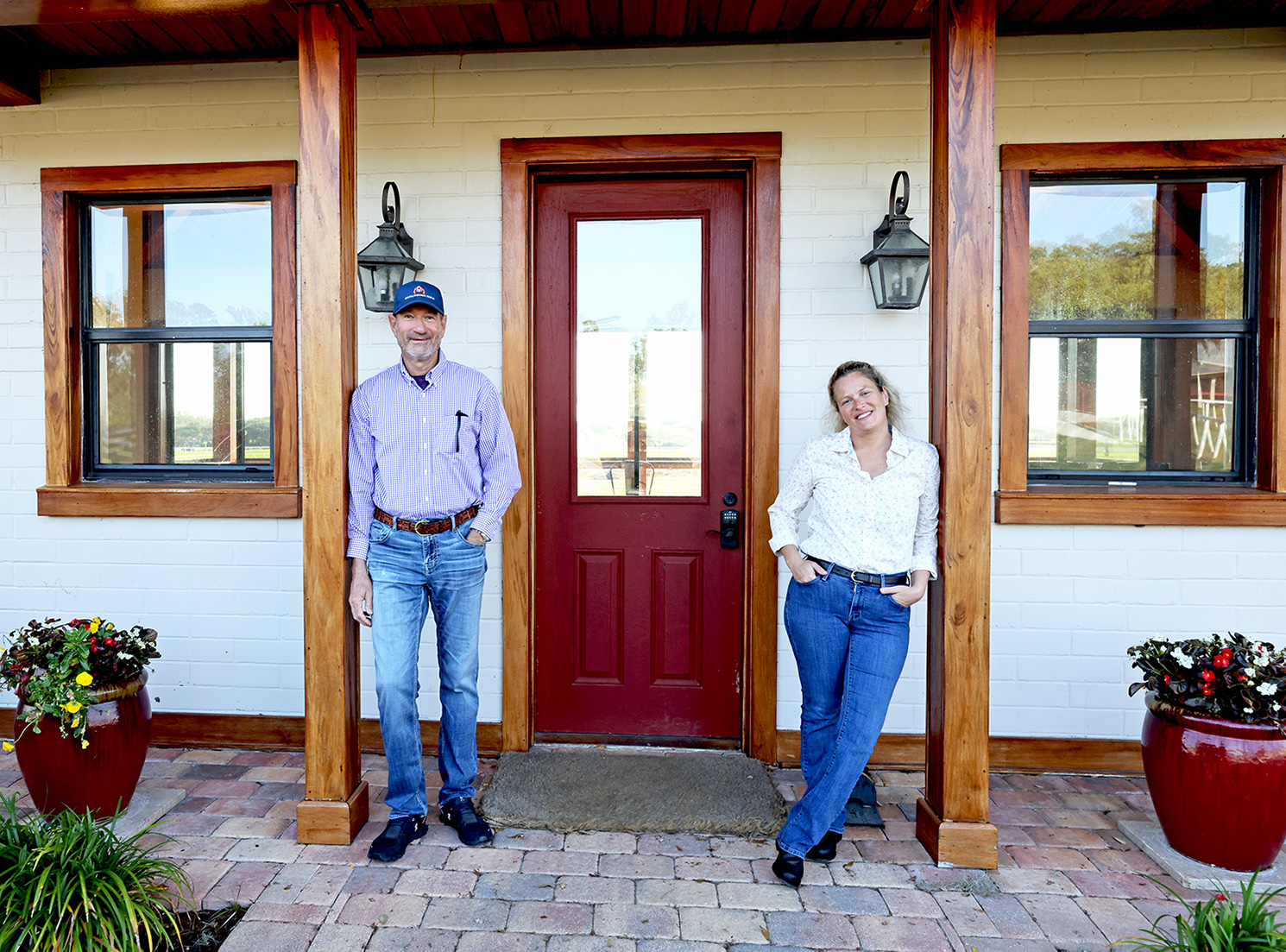As the head trainer at the prestigious Bridlewood Farms, Meda Murphy oversees more than 100 horses a season, which are bred and owned by the most prominent thoroughbred horsemen and horsewomen in the world.
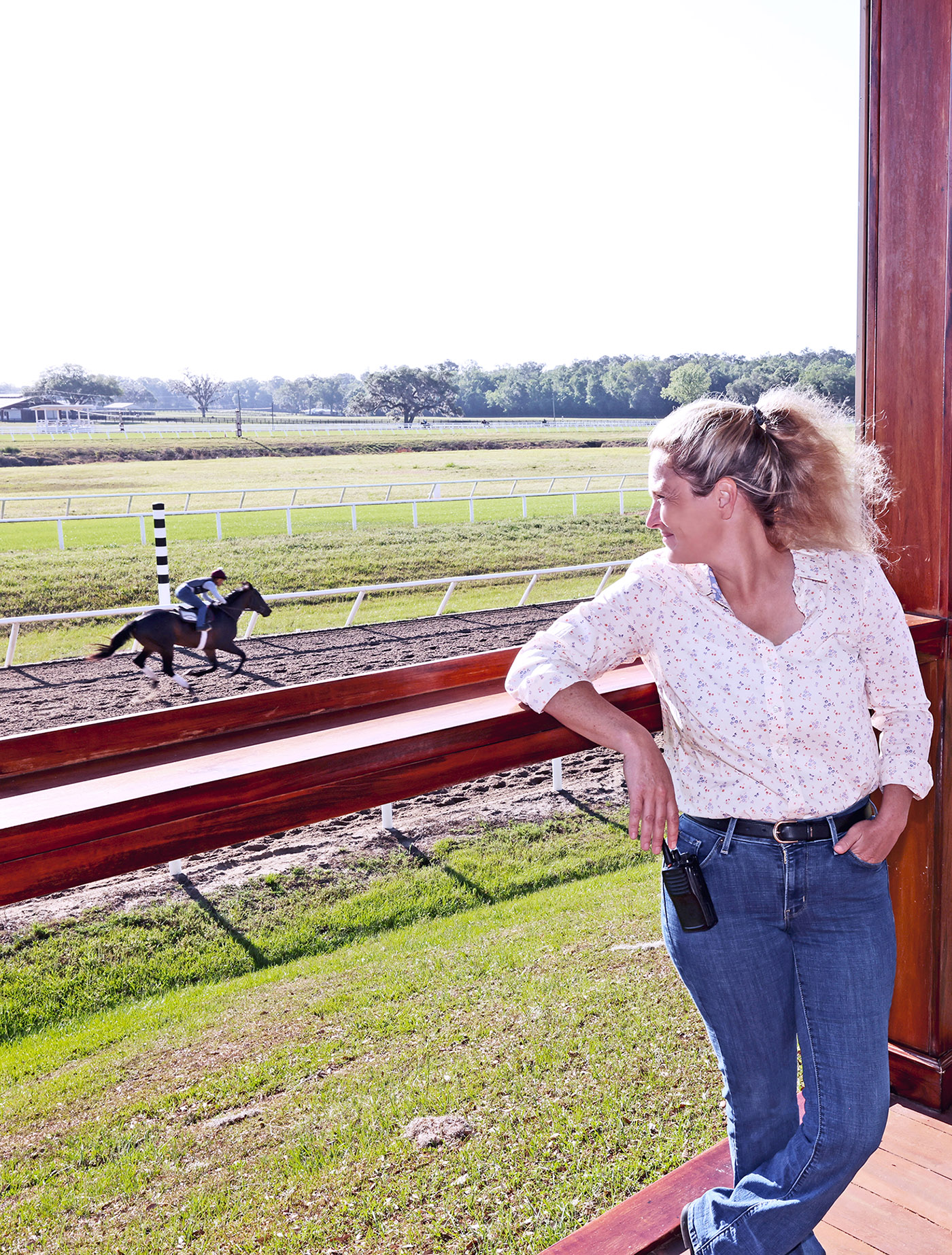
The first light of dawn is sneaking in as the young thoroughbreds emerge from the three white barns with maroon trim. These are unraced 2-year-olds, still in equine kindergarten. The skilled exercise riders on their backs guide them toward the training track, where they first trot then gallop into their morning workouts. Soon, as many as 21 horses at a time are on the track, each navigating traffic as they learn to become racehorses. Each horse has a morning training regiment specifically designed for it, depending on their mental and physical maturity. Here is where their racing talents begin to show; who’s going to be precocious and who’s going to need more time. In the racehorse business, this early foundation is what racing careers are built on.
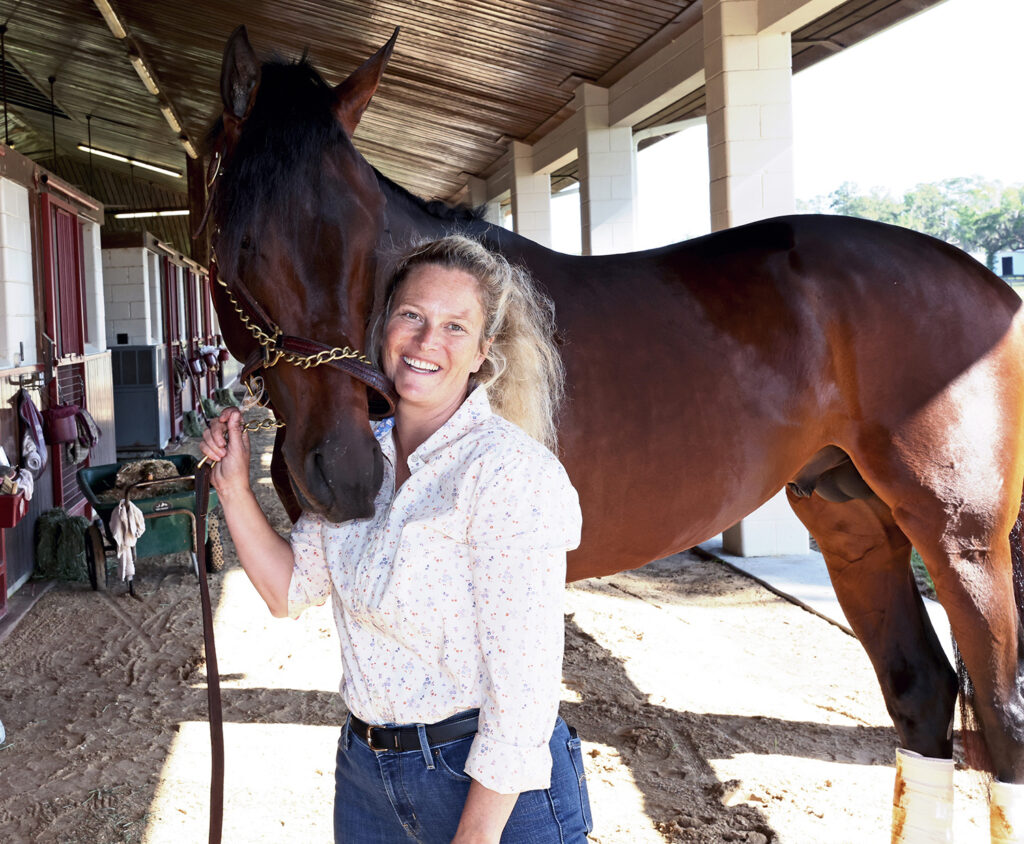 Back at the barns, grooms are saddling their next charges to go to the training track. Riders come back and switch horses while the previous mount heads to the washrack for a bath and then a cool-down walk. This steady procession of horses to and from the barns continues for three hours until all the horses scheduled for exercise that day have been out. And come tomorrow morning, it will commence again, six days a week.
Back at the barns, grooms are saddling their next charges to go to the training track. Riders come back and switch horses while the previous mount heads to the washrack for a bath and then a cool-down walk. This steady procession of horses to and from the barns continues for three hours until all the horses scheduled for exercise that day have been out. And come tomorrow morning, it will commence again, six days a week.
The ringmaster overseeing this thoroughbred version of a three-ring circus is Meda Murphy. Walkie-talkie in hand, she communicates with her assistant trainer and four barn foremen while striding barn to barn. She might stop to check a horse’s leg wraps or tack; or chat with an exercise rider coming off the track. Moving on to the trackside viewing stand, she’ll meet up with visiting clients and perhaps George Isaacs, the longtime Bridlewood Farm general manager.
“I love the challenges of working with horses. They are brain teasers who make you work to figure them out,” says Murphy, 39, whose take-charge personality perfectly suits her job. “There is a lot of satisfaction in watching a young horse develop here on the farm and then go on to become a good racehorse. Of course, I’m very spoiled by the quality of the horses that I get to deal with here. But they are no less challenging.”
Much like Murphy evaluates her equine charges, Isaacs as general manager does the same with his personnel.
“I’ve worked with Meda for 10 years. She was our chief exercise rider, then assistant trainer before becoming the farm trainer in 2020. I can easily say she is one of the most talented people with horses that I know,” says Isaacs. “Meda takes the job of training racehorses very seriously and has quickly garnered success. She has also earned not only my respect, but that of her crew, our clients, racetrack trainers and all of the other racing industry professionals she deals with on a daily basis.”
High praise indeed for the once little girl who walked home many times because her pony dumped her.
PONY LESSONS
Joan Armida Murphy’s middle name was also her great-grandmother and grandmother’s first names. She grew up known as Meda to avoid confusion when all three generations were together. Meda also grew up a horse-crazy kid in a non-horse family in Warrensburg, New York.
“I don’t remember a time I wasn’t obsessed with horses,” says Murphy, smiling. “My grandfather, who had been a farmer and had working horses, bought me a pony when I was 6. But he didn’t buy me a bridle and a saddle. Instead, he told me that I had to learn to ride bareback with a halter and rope. And, if I did that, then he would buy me a bridle and a saddle.”
The pony, a mare named Rusty, lived up to her kind’s contrary personality and made young Meda earn that bridle and saddle.
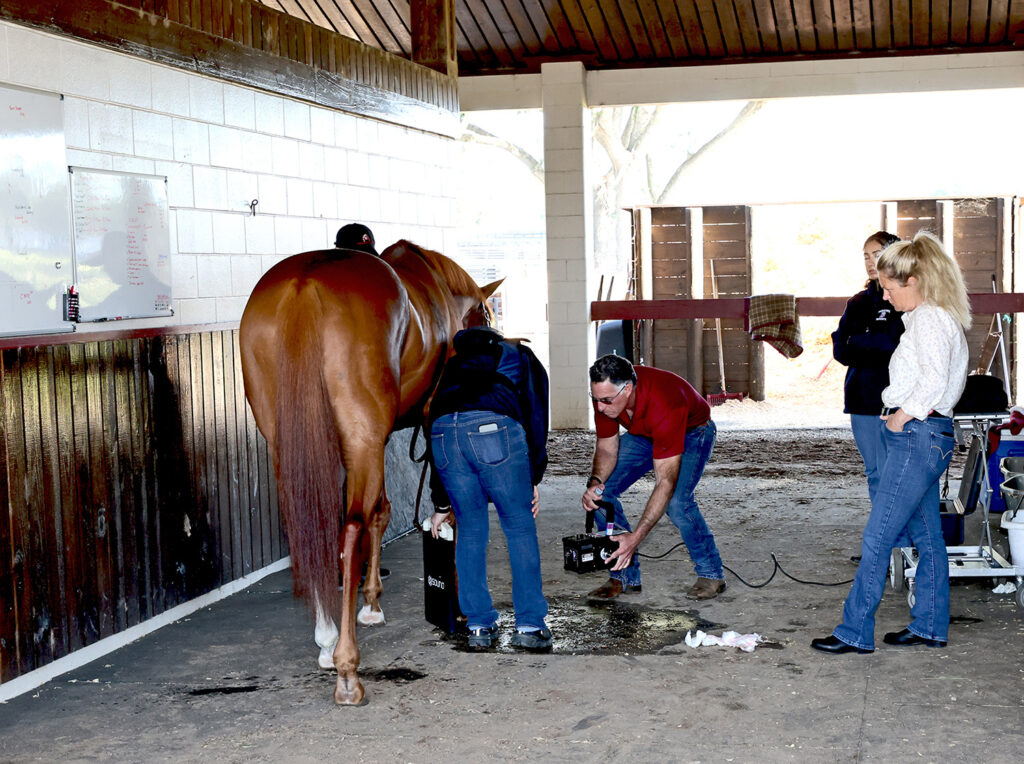
“Rusty loved to run, and she was very fast. I fell a lot and Rusty would go home without me,” shares Murphy, laughing. “I became a professional faller and had lots of walking-home lessons. I began to wonder if I’d ever learned to ride.”
When Murphy expressed her frustrations to her grandfather, she clearly recalls his response.
“My grandfather asked me, ‘Do you want to play tea or ride horses?’ So that clarified my choice, and I climbed right back on Rusty,” says Murphy. “And, finally, I did stay on her and earned that bridle and saddle.”
By the time she was 10, Murphy and Rusty were competing in area weekend shows, pole bending and barrel racing.
“By then I liked to go fast too, which suited Rusty just fine,” notes Murphy. “People would comment that I would ride Rusty around that arena so fast that I must’ve thought I was in a NASCAR race.”
A woman watching the young Meda and her pony race around the arena offered riding lessons in exchange for work; a common arrangement that all horse-crazy kids don’t pass up.
“I groomed, mucked stalls and did anything else it took for those riding lessons,” recalls Murphy. “Eventually that led to me showing the woman’s Arabian mare, Frannie, who became my best friend.”
Once she graduated from high school, Murphy continued riding but also became a welder.
“I specialized in custom welding and really enjoyed the creativity of that. But when the company I worked for switched to construction welding, I got bored,” says Murphy. “I quit welding and opened up a public training stable for riding horses. Then one of my clients told me about a thoroughbred training farm nearby that was hiring. I started there as a groom, worked my up to running a barn and started exercising thoroughbreds. I was 23 and I’ve been around thoroughbreds ever since.”
RACETRACK TO FARM
Having found a new profession as an exercise rider and with the fabled Saratoga Race Course in nearby Saratoga Springs, New York, it was likely inevitable that Murphy would end up there.
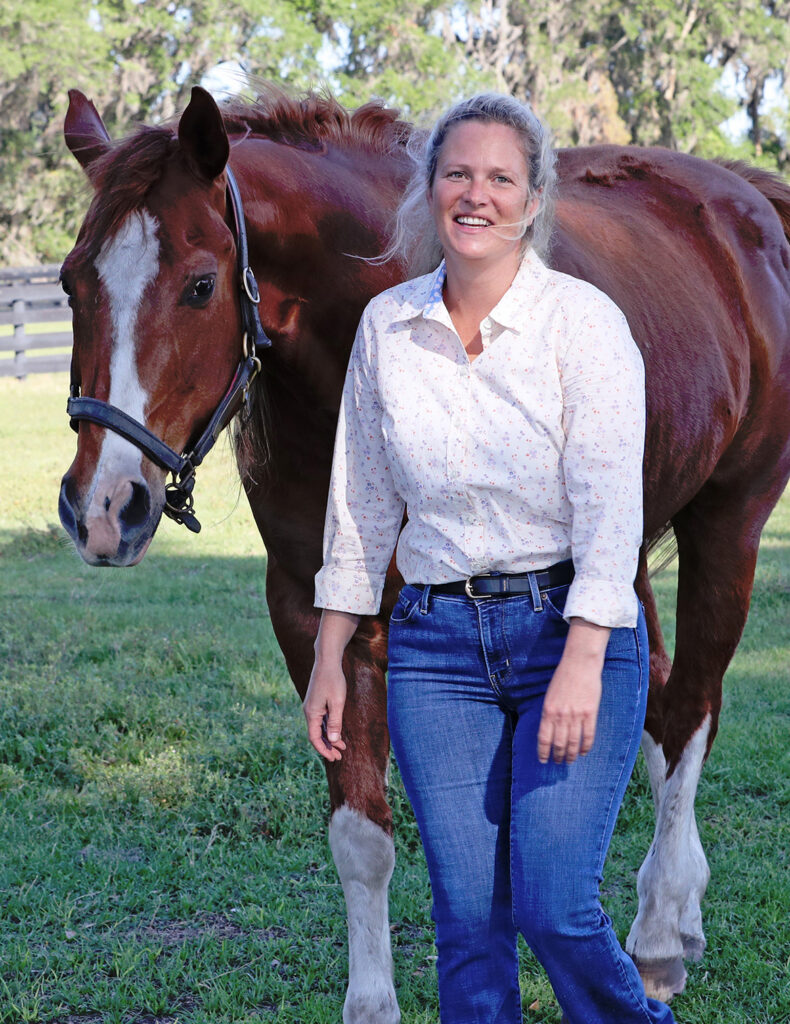
“I was an exercise rider for leading trainer Linda Rice at Saratoga from 2008 to 2012. I just fell in love with the racetrack life and was very happy,” Murphy recalls. “But when I became pregnant, I thought I needed a different environment to raise a child. I still wanted to be involved in the thoroughbred industry, but just in a different way.”
Following the birth of her son, Evan Mason, who is now 10 and is into soccer more than horses, Murphy moved to Ocala and became the chief exercise rider at John and Leslie Malone’s Bridlewood Farm in November 2013. In addition to her riding duties, Murphy was also in charge of the early training foundation leading up to and including every horse first going under saddle. Isaacs quickly realized Murphy’s talent in the saddle.
“During my 30-year career as general manager of two major training operations, I have witnessed all kinds of exercise riders,” notes Isaacs. “Once in a blue moon, a rare rider comes along that has a special gift of being able to communicate with a horse on a much higher plane. It’s a beautiful symbiotic relationship to witness. Meda has that gift.”
There is an old adage among horseback riders that, to paraphrase, it isn’t if you’re going to get hurt, it’s when. For Murphy, her when came in November of 2015. On a very bad day, she had a riding accident during morning training hours and suffered a tibial plateau open fracture of her left leg.
The tibia is the larger lower leg bone below the knee and in a tibial plateau fracture, the bone breaks into the knee joint itself. This type of fracture usually involves not only the bone, but damage to the meniscus, ligaments, muscles, tendons and skin around the knee. In the case of an open fracture, the tibia bone or parts of bone break through the skin.
What followed was a horror story for a rider and a testament to Murphy’s character.
“After the initial surgery, infection set in, so all the pins and screws had to come out and the wound had to stay open. I had to stay on intravenous antibiotics for months,” Murphy explains. “I’ve had eight surgeries to this point. A rod the length of my leg was put in and will be there for the rest of my life. Knee replacement surgery is in my future.”
During 18 months of rehabilitation, Murphy had to learn to walk again before she could even hope to get back in the saddle.
“I had to be lifted up into the saddle on my horse Rambo,” shares Murphy. “Like me, Rambo, a racetrack lead pony horse, had been through rehab too at Bridlewood. When his owner decided to retire him, he gave him to me. I knew Rambo would take care of me and he did. He will always have a home with me.”
But Murphy eventually had to face a hard truth.
“I knew I couldn’t get back to the level of riding that I was used to, so I made one of the toughest decisions that I’ve ever had to make,” she admits. “My career as an exercise rider was over. You have to play the cards that you’re dealt.”
But there were still plenty of winning cards in Murphy’s deck and Isaacs knew it.
“It was a no-brainer that once Meda made her decision, she would be promoted to assistant trainer. And then no surprise at all that she became the farm trainer,” says Isaacs. “Meda is very detail oriented with each and every horse. She designs a training program that is suited to best developing that individual horse. She has thrived and excelled as the head trainer. And we have a great relationship built on mutual trust and respect.”
Despite the cruel twist of fate, Murphy has adapted to her new position with a pragmatic perspective from the ground up.
“I am very content with where my life is right now. Working with thoroughbreds is a 24/7, never-boring career,” she offers. “Considering everything, I’ve made my choices and my life is good.” OS
